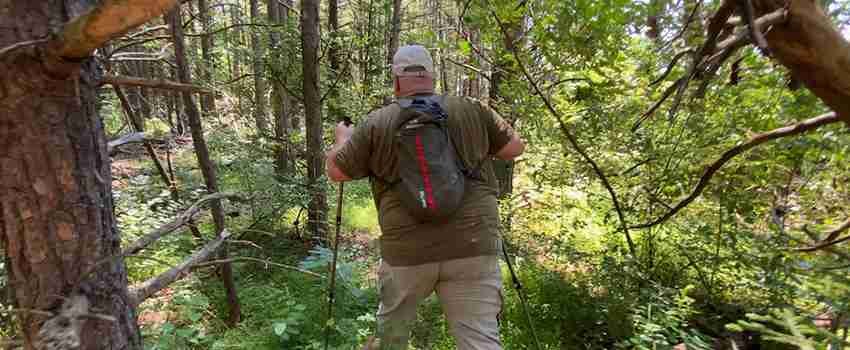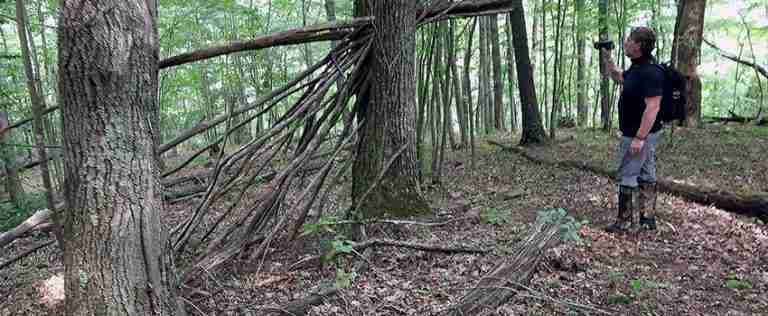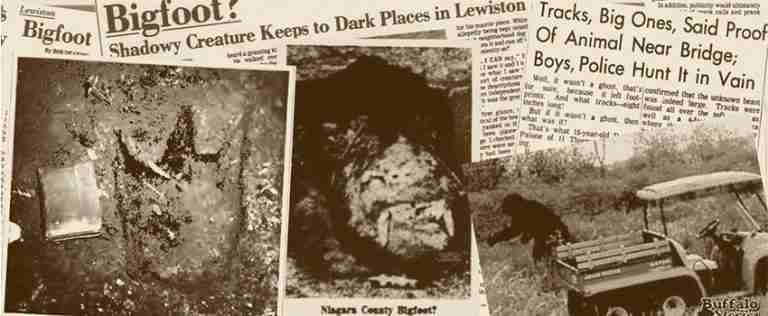Exploring the Science of Bigfoot: Investigating the Legend of the Sasquatch

Bigfoot, also known as Sasquatch, is a mysterious creature that is believed to inhabit the forests of the Pacific Northwest region of North America. The creature is described as a large, ape-like being with long arms and shaggy fur, and is known for its strong, musky smell. Despite numerous reported sightings and encounters with Bigfoot, there is still no concrete evidence to prove the creature’s existence.
The enduring mystery surrounding Bigfoot’s existence has captured the imagination of people for decades and has sparked numerous efforts to find evidence of the creature. Many people have searched for Bigfoot in the forests of the Pacific Northwest, using a variety of methods, including collecting hair samples and using thermal imaging cameras.
The purpose of this article is to delve into the science behind searching for Bigfoot and to explore the role of scientific method in investigating the creature’s existence. By examining the history of Bigfoot research and the various theories about the creature’s origins, as well as the methods used to try to find evidence of Bigfoot, we can gain a better understanding of the enduring mystery surrounding this legendary creature.
The History Of Bigfoot Research
The history of Bigfoot research dates back to the 1800s, when indigenous tribes in the Pacific Northwest region of North America told stories about a giant, ape-like creature called the Sasquatch or Hairy Man. In the 1900s, the first modern sightings of Bigfoot were reported, with people describing encounters with a large, humanoid creature with long arms and a distinctive smell. These sightings continued throughout the 20th century, with reports coming from all over the United States and Canada.
There are many theories about the existence of Bigfoot and what it might be. Some people believe that Bigfoot is a type of undiscovered primate, while others think it could be a surviving member of an ancient human species. Some researchers have even suggested that Bigfoot might be an extraterrestrial being that has visited Earth. Despite the numerous theories and the many reported sightings, there is still no concrete evidence to prove the existence of Bigfoot.
In order to try to find evidence of Bigfoot, researchers and enthusiasts have used a variety of methods. These include collecting hair samples and other physical evidence, such as footprints and scat, and using thermal imaging cameras and other advanced technology to try to detect the creature. Many people have also searched for Bigfoot using more traditional methods, such as following tracks and calling out to the creature in the hopes of eliciting a response. Despite these efforts, the mystery of Bigfoot’s existence remains unsolved.
The Role Of Science In Bigfoot Research
The role of science in Bigfoot research is crucial in helping to determine the validity of sightings and evidence and to understand the mystery surrounding the creature’s existence. Scientific method is a systematic approach to research that involves making observations, collecting data, and testing hypotheses in order to draw conclusions about a particular phenomenon. This approach is critical in Bigfoot research, as it helps to ensure that the evidence is collected and analyzed in a systematic and unbiased manner.
One of the ways that science can be used in Bigfoot research is through the examination of physical evidence. This can include collecting and analyzing hair samples, scat, and footprints in order to identify the species or individual that left them. Scientific techniques such as DNA analysis can be used to examine these samples and help to determine their authenticity.
In addition to examining physical evidence, scientific method can also be used to evaluate eyewitness accounts and other anecdotal evidence. This can involve using statistical analysis to determine the likelihood of a particular sighting being genuine or examining the credibility of the witness.
Overall, the use of scientific method in Bigfoot research is essential in helping to determine the validity of evidence and to understand the mystery surrounding the creature’s existence. By using a systematic and unbiased approach, researchers can better understand the nature of the Sasquatch and the many theories about its origins.
The Limitations Of Bigfoot Research
Conducting scientific research into Bigfoot presents a number of challenges and limitations. One of the main difficulties is the lack of concrete evidence of the creature’s existence. Despite numerous reported sightings and encounters, there is still no conclusive evidence to prove that Bigfoot exists. This makes it difficult for researchers to study the creature and to develop a better understanding of its behavior and habits.
Another challenge of Bigfoot research is the difficulty of studying an unknown species. If Bigfoot does exist, it is likely to be an undiscovered species of primate, which means that researchers do not have a baseline of knowledge about its biology, behavior, and habitat. This makes it difficult to develop research strategies and to make predictions about the creature’s characteristics and habits.
In addition to these challenges, there are also limitations to the current scientific methods that are used to study Bigfoot. Many of the techniques that are used to search for the creature, such as collecting hair samples and using thermal imaging cameras, are limited in their accuracy and reliability. New technologies and approaches may be developed in the future that could help to overcome these limitations and provide a more comprehensive understanding of the Sasquatch.
Despite these challenges and limitations, many researchers remain dedicated to studying Bigfoot and to finding concrete evidence of the creature’s existence. As new technologies and approaches are developed, it is possible that the mystery of Bigfoot may one day be solved.
Conclusion: Exploring the Science of Bigfoot: Investigating the Legend of the Sasquatch
The main points of the article have focused on the history of Bigfoot research and the various theories about the creature’s existence, as well as the role of science in investigating the creature’s existence and the limitations of current research methods. Despite the many reported sightings and the efforts to find evidence of Bigfoot, the creature remains a mystery and the debate about its existence continues to this day.
One of the main ongoing debates in Bigfoot research is the question of whether or not the creature is real. Some researchers believe that there is enough evidence to suggest that Bigfoot is a real, unknown species of primate, while others remain skeptical and believe that the sightings and evidence could be explained by other factors. The future of Bigfoot research is uncertain, but many people remain fascinated by the mysterious creature and continue to search for evidence of its existence.
In the future, it is possible that new discoveries in the field of Bigfoot research could help to shed more light on the creature and its origins. New technologies and approaches may be developed that could provide a more comprehensive understanding of the Sasquatch and help to resolve the debate about its existence. Until then, the mystery of Bigfoot will continue to captivate the imaginations of people around the world.






